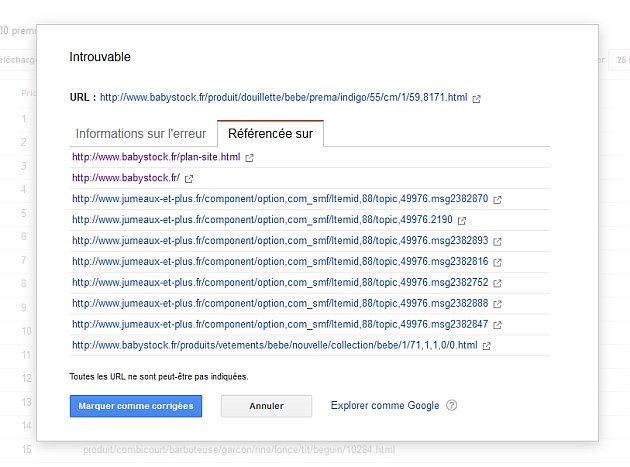News
Comment trouver et gérer les erreurs 404 de son site

Over the course of its life, a site evolves, the other sites too, which means that after a while it is common to accumulate 404 errors (non-existent page).
This can be caused by URLs that have changed or disappeared on your site, but also by these same changes on your external links.
Let's see why and how to fix 404 errors.
Why Fix 404 Errors?
For your visitors: What could be more unpleasant than landing on a 404 page when clicking on a link?
This gives a bad image of your site which is immediately perceived as not being updated. Incidentally, this can make you lose sales on an e-commerce for example.
For Google: A site that contains too many external 404 errors (links to non-existent external pages) is probably not perceived as very up-to-date. But above all, it is possible that external sites make links to you and that these point to pages in error. And there you lose everything, the visitor, and the link "juice" that was improving your rankings.
How to correct these errors?
Internal 404 errors
The first reflex to have is to see if we are not creating these errors ourselves.
For this, you can use software like Screaming Frog.
It's a crawler that will browse your site and bring you back a lot of information, including your internal links in error.
The free version only crawls 500 URLs of your site, but that's it.
1/ I enter the url of my site and I click on "Start" then I let it grind
2/ I click on the "internal" tab
3/ I click on the "status code" column to sort the codes.
4/ When I see a 404, I click on the line
5/ I choose the "Inlink" tab in the bottom table.
6/ The detail tells me on which page my broken link is and to which page it points.
I can then go and correct the link on the page of my site that points to an error. This is probably the case because the linked page no longer exists or has changed its URL. See in detail the example below.
I strongly insist on this step, because it will be much easier to move on to the next ones if there are no more 404 errors generated by our own site.
In practice, by clicking on the "External" tab you will see that in the same way you will display the details of the links that your site makes to pages that no longer exist on external sites.
What Google sees from our 404 errors.
Because Google is usually the first engine that interests us and it offers us a tool for this, we will use it (even if it is not perfect), it is the Google Webmaster tools console. This will allow us to know the incoming external links that point to pages of our site that no longer exist.
1/ Log in to your Google account and go to Google Webmaster Tools. Choose the site concerned if you have several on your account.
2/ In the left column, click on "Exploration" then "Exploration errors".
Google will show you a list of errors it has found.
3/ Click on an error line to display its details
4/ Click on the "Referenced on" tab.
It is from here that everything is played.

We had seen the internal errors.
We realize that Google displays 2 types of 404 errors.
Those from the site itself, internal errors (in the example: babystock.fr) and those from external sites.
Remember, beforehand, you fixed all your internal errors, which means that the problem concerning them will solve itself.
If Google only shows you internal 404 errors, you can click "Mark as fixed", if the error comes back, Google will show it to you.
There remain errors from external sites.
In the example, we see that links from the twins-and-plus.fr site point to pages that no longer exist on the site.
By clicking on the URLs, we can display the external site to see what it is. See image below.
It's up to you to redirect non-existent URLs in 301 to point them to the page of your choice on your site (a similar article, the upper category, etc.)
In the framework of the sites that we develop, a simple interface makes it possible to manage this. If you use CMS, some offer more or less well done solutions. There are also plugins designed for various CMS on the market.
If this is not the case, you will have to make your redirections by going to integrate them into your .htaccess file, I admit that it is a little more complicated and risky if you do not know what you are doing.. .
In the framework of the sites that we develop, a simple interface makes it possible to manage this. If you use CMS, some offer more or less well done solutions. There are also plugins designed for various CMS on the market.
If this is not the case, you will have to make your redirections by going to integrate them into your .htaccess file, I admit that it is a little more complicated and risky if you do not know what you are doing.. .
Open ticket
Submit a support ticket





